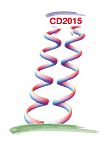Speaker
Evangeline Downie
(George Washington University, Washington)
Description
Polarizabilities are fundamental properties of the nucleon which can be accessed by measuring the differential cross section, and singly and doubly polarized asymmetries in real Compton scattering (RCS). Their measurement gives rise to a better understanding of nucleon dynamics and structure. Polarizabilities play an important role in many areas of physics: from being the largest component of the theory error in the extraction of the radius of the proton from the Lamb shift, to influencing neutron star physics. Despite their all-pervading nature, and great theoretical interest, there is still a large uncertainty in the nucleon scalar polarizabilities, and the nucleon spin polarizabilities had, until recently, never been individually measured [1].
Compton Scattering data. In order to minimize and control the model-dependence of the of the extraction, it is imperative to use a variety of different theory flavors and models. It is also important to measure over as broad an energy and angular range as possible in order to provide a strenuous test of the various theories. The small-cross section RCS process can be difficult to cleanly extract from the data, it is therefore necessary to measure these RCS asymmetries at multiple laboratories with differing beam types and detector setups. To this end, there are active RCS programs at MAX-IV in Lund, and HIGS at TUNL in addition to MAMI.
The polarizabity measurement program relies on theory to extract the polarizabilities from the real Compton Scattering data. In order to minimize and control the model-dependence of the of the extraction, it is imperative to use a variety of different theory flavors and models. It is also important to measure over as broad an energy and angular range as possible in order to provide a strenuous test of the various theories. The small-cross-section RCS process can be difficult to cleanly extract from the data, it is therefore necessary to measure these RCS asymmetries at multiple laboratories with differing beam types and detector setups. To this end, there are active RCS programs at MAX-IV in Lund, and HIGS at TUNL in addition to MAMI.
The MAMI measurement program spans spin and scalar polarizabilities [2], with data taken on three different asymmetries (Sigma_{2x}, Sigma_{2z}, and Sigma_{3}) in the region of the delta resonance in order to obtain the spin polarizabilities [3]. These are the first measurements of doubly polarized asymmetries in real Compton scattering. There has also been a measurement of Sigma_{3} below pion production threshold in order to extract the proton scalar electric and magnetic polarizabilities (alpha_{E1} and beta_{M1}, respectively) independently from each other. At HIGS, there are planned Sigma_{2x} and Sigma_{3} measurements and the neutron measurement program is also in progress. Al MAX-!V, the final nuclear physics measurement is planned to be RCS on the deuteron. MAMI too is moving towards neutron measurements with planned RCS cross section measurements on ^{3/4}He. The theory development necessary for the interpretation of the data is also already well underway [4].
In these times of great change and new data, we will provide an overview of the current status of the experimental program across all three labs and the future outlook.
References
1. H.W.Griesshammer, J.A.McGovern, D.R.Phillips and G.Feldman, Prog. Part. Nucl. Phys. 67 (2012) 841.
2. E.J.Downie and H.Fonvieille, Eur. Phys. J. ST 198 (2011) 287-306.
3. P.P.Martel et al., Phys. Rev. Lett. 114, (2015) 112501.
4. H.W.Griesshammer, D.R.Phillips, B.Strandberg, in preparation.

